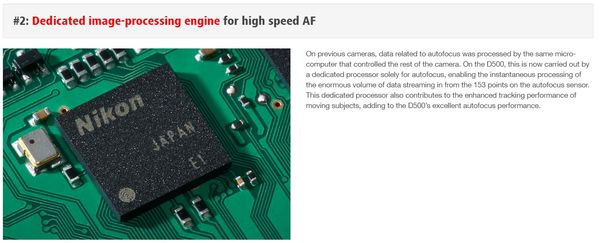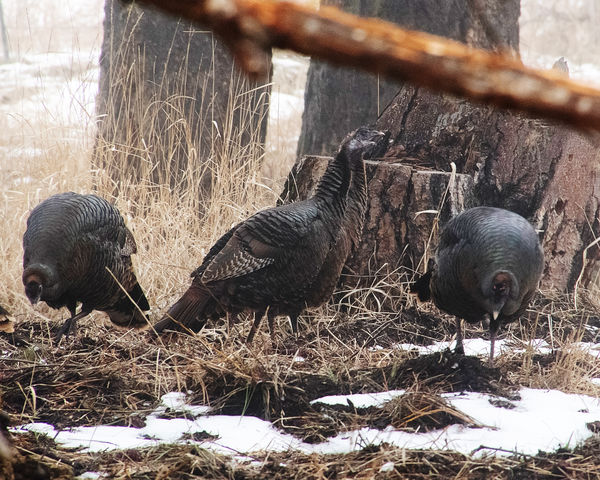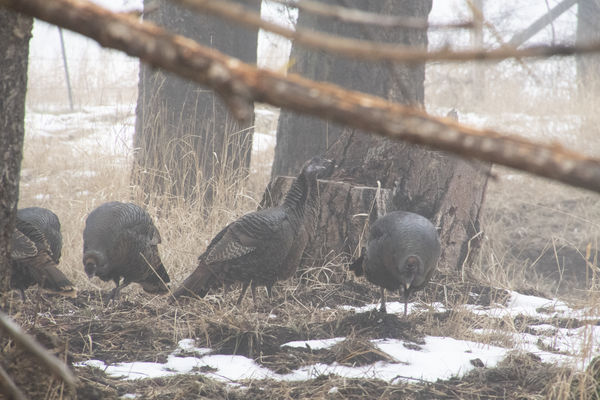Nikon d500 and noise
Jan 27, 2020 11:09:47 #
Ok everyone.....from what I am getting from everyone's post is that it's not the camera but the person behind the camera that has to do a better job....got it! I will take everyone's suggestions and practice more in low light conditions to improve my skills.
Thanks everyone, I do appreciate everyone commenting and pointing me in the right direction.
Thanks everyone, I do appreciate everyone commenting and pointing me in the right direction.
Jan 27, 2020 11:34:13 #
https://youtu.be/yLJvQiQBDa4
Steve perry about higher ISO or cropping- Watch it it’s good usable info
Steve perry about higher ISO or cropping- Watch it it’s good usable info
Jan 27, 2020 11:45:56 #
CindyHouk wrote:
Ok everyone.....from what I am getting from everyone's post is that it's not the camera but the person behind the camera that has to do a better job....got it! I will take everyone's suggestions and practice more in low light conditions to improve my skills.
Thanks everyone, I do appreciate everyone commenting and pointing me in the right direction.
Thanks everyone, I do appreciate everyone commenting and pointing me in the right direction.
Hi Cindy. I own the Nikon D500. I can tell you that this camera is a great camera for wildlife and fast moving subjects, but it does not handle high ISO very well. I think someone else has also told you this. I often use it with my Nikon 200-500 f/5.6 and in løw light, wide open, noise can be a problem. This camera performs very well in better light situations. A crop camera cannot compete with a full frame camera in low light high ISO situations. Additionally, the aperture range of the lens you are using affects the ability you have to get a good shot. Using a lens with a wider possible aperture, f/4 or f/2.8 would allow you to use a lower ISO. In low light conditions, as someone has noted, shooting to the right, or the highlight end of the histogram, might assist in the ability tø decrease noise. Photography is always a "dance" to get balance and end up with a decent shot. Often you can fix things in processing. I've taken a very dark shot of a jungle animal and then created a decent image after processing. Use noise removal software of some sort when required. Get to know your gear and its limitations and make adjustments as needed. Things to work on could be a lens with a wider aperture, a correct exposure in each situation, a better ability to take the shot. It's not just about the camera.
Jan 27, 2020 12:40:58 #
CindyHouk wrote:
I have read that the d500 is supposed to be really... (show quote)
Cindy, Looks like a foggy morning, maybe that's the problem.
Jan 27, 2020 13:27:23 #
I also use the D500 and absolutely love it for wildlife. Even the guys I pay to go on wildlife adventures with use the D500.
Here Is one of my images.
Here Is one of my images.
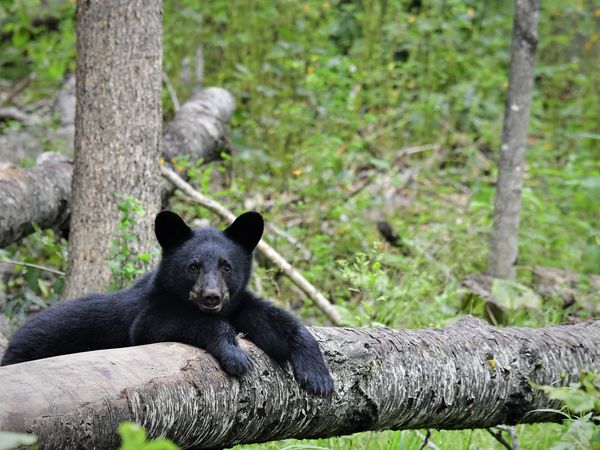
Jan 27, 2020 13:47:59 #
Juy
Loc: Delaware
CindyHouk wrote:
I have read that the d500 is supposed to be really... (show quote)
I have been shooting the D500 for about a year, maybe little longer. I don't think yours has any problem, but I'm just a hobbyist. As "Chg Cannon" has stated and given some attachments that shed allot of understanding, exposure is key as is subject illumination. Will you get noise free shots with dark subject with low exposure? NO! Does the atmosphere in the shot contribute? YES! As many have shown, you can get really good results when all the variables are in order. I can’t seem to locate any shots that would have similar conditions to show you but I have attached one that is untouched with exception of converting to jpg.
This is just to show how well the image can be, with the proper variables. Oh I got it by luck, and as you can see it could be better. Now these don't really meet the same circumstance or conditions as youres so take them for what they are worth.
First shot is Kinglet, D500 Tamron 150-600 @420mm F8 1/1000 +.7ev iso8000 yes iso8000
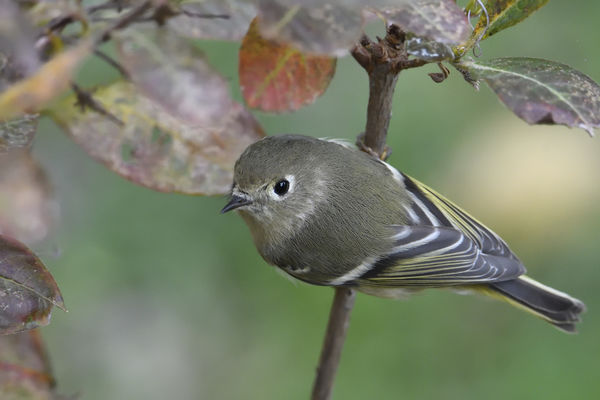
(Download)
Second shot Red-bellied Woodpecker D500 Tamron 150-600 @600 F13 1/800 +1.0ev iso5000
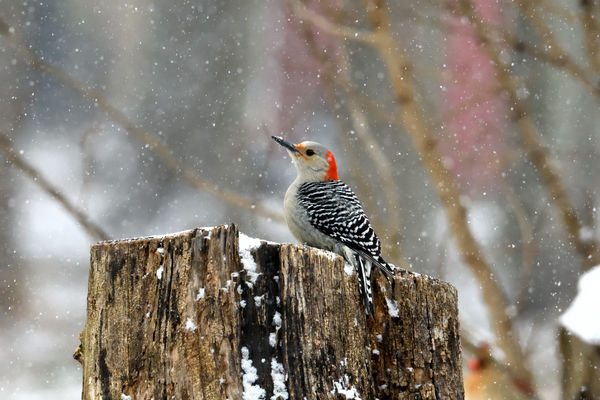
(Download)
Jan 27, 2020 16:23:18 #
I'm a D500 (I've had one since they came out, so it's going on 3 years now) wildlife photographer and do a lot in low early morning light. One of my tricks is to shoot in Aperture Priority mode and open up to the widest aperture I can. This gives a shallow depth of field and a nice bokeh, you just have to be sure you are focused on your subject tightly. I use manual ISO and start at ISO 400, that way the only thing the camera can change is the shutter speed. I roll the ISO up and down to get the shutter speed I want. A perched bird might be 1/250 or even slower. A bird in flight 1/1000 to 1/4000 depending on the subject and light conditions. I use spot focus and spot metering, that way the camera is metering on your subject rather than the whole frame, which is what I want for birds and wildlife most of the time. I find that I have to remove noise in Lightroom or elsewhere when I bump up much past ISO 500 if I don't want a grainy look to my background, which I sometimes do. I'll use the spot adjustment brushes to sharpen my subject and make selective exposure adjustments too. I paint around the subject with a noise reduction brush. If you do both noise reduction and sharpening to your subject, it will look like plastic. Yes, I have shot indoor events at ISO 3200 and above with no flash, but you need to fix some noise in post. I couldn't even get these shots with older cameras. The D500 is a low light beast, I think you just need to learn to work around noise and limit it by using the slowest shutter speeds and widest apertures that you can to keep your ISO within reason. That's my 2 cents. Good luck!
Jan 27, 2020 17:20:42 #
martinfisherphoto wrote:
Personally I found ISO 1600 the highest I was willing to go with the D500. Not sure what your threshold is. I also found my D7200 out performed the D500 in the acceptable ISO range. I'm not knocking the D500 as it can shot circles around most other Nikon cameras, just not impressed with ISO capabilities. As already stated the OP's images are poor examples of the cameras abilities.
I'm wanting a D500. Currently have a D7200. I use auto ISO most of the time and limit it to 3200. Shooting manual. Do you think the D500 is worth the upgrade? I don't really need the blazing fast shooting but would like the autofocus system. I've read it's the cats meow. I would appreciate your personal opinion. Thank you
Jan 27, 2020 17:55:07 #
Drbobcameraguy wrote:
I'm wanting a D500. Currently have a D7200. I use auto ISO most of the time and limit it to 3200. Shooting manual. Do you think the D500 is worth the upgrade? I don't really need the blazing fast shooting but would like the autofocus system. I've read it's the cats meow. I would appreciate your personal opinion. Thank you
I have a D500. The D5, D500, and D850 are the first Nikons to have a dedicated autofocus processor. It's fast and reliable. You can count on it to nail the focus every time.
On previous cameras, data related to autofocus was processed by the same micro-computer that controlled the rest of the camera. On the D500, this is now carried out by a dedicated processor solely for autofocus, enabling the instantaneous processing of the enormous volume of data streaming in from the 153 points on the autofocus sensor. This dedicated processor also contributes to the enhanced tracking performance of moving subjects, adding to the D500’s excellent autofocus performance.
Jan 27, 2020 18:14:30 #
CO wrote:
You have brought up an important consideration. Because of the special processor, the D500 provides excellent AF. I was surprised that the D750 is the Nikon camera especially prized because of its high ISO handling. As an outsider, I think of both AF and NR as being strengths of the D500. but that doesn't seem to be the view of Nikon users, which may partially explain the last photo in this post by another outsider:I have a D500. The D5, D500, and D850 are the firs... (show quote)
https://www.imaging-resource.com/news/2017/02/10/pentax-kp-first-shots
Jan 27, 2020 18:21:08 #
amfoto1
Loc: San Jose, Calif. USA
All three images appear to have been shot through a window or through a cheap filter or through fog with a low quality lens.
First image is a good stop or two under-exposed. By the time its adjusted, that will amplify any noise a good deal.
All three images, but particularly the first two, are also back-focused... the birds are out of focus... focus appear to be somewhere behind the subjects.
Part of the reason for the low contrast image are the ambient conditions... flat lighting, gray/brown subjects against gray/brown trees, shooting through foggy conditions.
Another part of the problem is probably from a $629 3rd party "do-it-all-but-none-of-it-particularly-well" consumer grade zoom lens on a pro-grade, $1700 camera. A D500 "deserves" better lenses! This lens might do a bit better if it were focus calibrated on the camera. Some Tamron lenses can be calibrated in certain ways using their Tap-In module... I don't know if the 16-300mm PZD is one of those. The D500 itself also has means of calibrating lenses to some extent. I'm really not sure how much it can help or if the PZD focus drive of the lens is prone to mis-focusing. (All lenses have some variation.... don't always focus to exactly the same point... but some are better than others.) I also don't know if a lens with such extreme range of focal lengths will be possible to calibrate well.
The third image is the best of the three, but still extremely low contrast. That condition makes any noise especially apparent. I hope you don't mind, I downloaded, opened it in Photoshop, boosted contrast using curves and applied some noise reduction. It ain't perfect, but it's improved and not bad for an image shot at ISO 5000. Just don't look at it "too large". Anything over about 33% (in Photoshop and on my graphics quality monitor) starts to show some slight noise.... actually sort of a "granularity". (This is not surprising... after all, digital images are made up of millions of individual dots we call pixels.)
There is also some chromatic aberration, magenta/green fringing that particularly shows up in the slightly out of focus areas of higher contrast... such as the edge of the snow, the trees/birds against the snow, the grass against the snow. This could be fixed, too, though I didn't do anything about it.
Below is the edited image, which I also cropped a little, followed by a re-posting of your original for sake of comparison:
First image is a good stop or two under-exposed. By the time its adjusted, that will amplify any noise a good deal.
All three images, but particularly the first two, are also back-focused... the birds are out of focus... focus appear to be somewhere behind the subjects.
Part of the reason for the low contrast image are the ambient conditions... flat lighting, gray/brown subjects against gray/brown trees, shooting through foggy conditions.
Another part of the problem is probably from a $629 3rd party "do-it-all-but-none-of-it-particularly-well" consumer grade zoom lens on a pro-grade, $1700 camera. A D500 "deserves" better lenses! This lens might do a bit better if it were focus calibrated on the camera. Some Tamron lenses can be calibrated in certain ways using their Tap-In module... I don't know if the 16-300mm PZD is one of those. The D500 itself also has means of calibrating lenses to some extent. I'm really not sure how much it can help or if the PZD focus drive of the lens is prone to mis-focusing. (All lenses have some variation.... don't always focus to exactly the same point... but some are better than others.) I also don't know if a lens with such extreme range of focal lengths will be possible to calibrate well.
The third image is the best of the three, but still extremely low contrast. That condition makes any noise especially apparent. I hope you don't mind, I downloaded, opened it in Photoshop, boosted contrast using curves and applied some noise reduction. It ain't perfect, but it's improved and not bad for an image shot at ISO 5000. Just don't look at it "too large". Anything over about 33% (in Photoshop and on my graphics quality monitor) starts to show some slight noise.... actually sort of a "granularity". (This is not surprising... after all, digital images are made up of millions of individual dots we call pixels.)
There is also some chromatic aberration, magenta/green fringing that particularly shows up in the slightly out of focus areas of higher contrast... such as the edge of the snow, the trees/birds against the snow, the grass against the snow. This could be fixed, too, though I didn't do anything about it.
Below is the edited image, which I also cropped a little, followed by a re-posting of your original for sake of comparison:
Jan 27, 2020 18:31:57 #
amfoto1 wrote:
All three images appear to have been shot through ... (show quote)
Don't mind at all and I like your edits. shot outside not thru a window or glass in any way, also used the Tamron 16-300 lens...which to me isn't cheap and no filter.
I didn't edit mine in any way for this post, I just wanted to know if the issue with the noise was the camera or the person using the camera
 and from everyone's comments...I have come to the conclusion that YEP...it's the person behind the camera that needs more practice in low light conditions!!
and from everyone's comments...I have come to the conclusion that YEP...it's the person behind the camera that needs more practice in low light conditions!!Jan 27, 2020 18:44:06 #
larryepage
Loc: North Texas area
Drbobcameraguy wrote:
I'm wanting a D500. Currently have a D7200. I use auto ISO most of the time and limit it to 3200. Shooting manual. Do you think the D500 is worth the upgrade? I don't really need the blazing fast shooting but would like the autofocus system. I've read it's the cats meow. I would appreciate your personal opinion. Thank you
I've been shooting a D500 for almost a year now. Bought it as a crop alternative to my D810 and D850 when the bigger files aren't needed. Also wanted a crop camera that was more similar to those cameras than my D300 and D300s.
I have found the D500 to be an all-around workhorse that can do just about everything with excellence. I'd held off buying one due to all the "sports and wildlife" kool-aid, since I shoot neither of those, but really have come to regret my delay.
As for those who say its high ISO performance isn't good, my suspicion is that those photographers simply haven't learned how to "do" high ISO. I have a friend who has produced Milky Way images that I'd challenge anyone to identify as not from a full frame camera. I think that the difference is that he was in the same excellent class that I was in, and he learned what to do and why.
Be aware, though, that even though the D500 will make any lens better, it puts almost exactly the same demands on a lens (and photographer) that a camera like the D850 does. It will not magically solve your shortcomings unless you study and apply the best techniques and make the best decisions around what you are doing.
So best of luck. I encourage you to get the D500 that you want and learn how to use it.
Jan 27, 2020 18:58:25 #
larryepage wrote:
I've been shooting a D500 for almost a year now. B... (show quote)
Hi. Just a note to you to say that there is a great deal of difference in shooting night photography and in shooting wildlife photography. In night photography we can set our camera to a very long shutter speed and a finite ISO to get the correct exposure, then we sit and wait. In wildlife photography we want, in many cases, a very fast shutter speed to get the motion that we want, either stop or perhaps only partially stopped motion. If our lens will only go open so wide, say f/5.6 and we need a fast shutter speed but there is very little light then we are forced to up our ISO, thus creating a shot with more noise than we'd like, a low-light shot. The two types of shooting are very different. For night photography I use my Nikon Z7, a full frame sensor that will capture more light than my Nikon D500. The 7 will allow me to get the shot quicker, too, so that I don't get oblong stars. Conversely, I use my Nikon D500, due to its autofocus, frame rate and buffer, to quickly capture moving animals instead of my Z7. Any camera will take an image, the question is always how good is that particular image with that camera at that time. Sometimes, we just want more!
Jan 27, 2020 19:10:43 #
mas24
Loc: Southern CA
One wonders, how Nikon can make a crop sensor DSLR successor to the D500, better than it already is. The successor will probably have another two features, that most won't care about. However, Nikon may have a long period of time in years, from the D300s to the D500. A long wait it was.
If you want to reply, then register here. Registration is free and your account is created instantly, so you can post right away.







